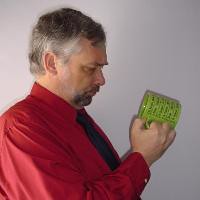While this list is by no means exhaustive, here are some of the news sources that I visit more or less weekly:
- Yahoo! News - this is more like a portal than a source. Yahoo provides links to wire service information and major newspapers, organized topically and searchable. If you want to read about politics, there's a page on politics. If you want to read about Asia, there's a page on Asia. If you want to read about science news, there's a page. You get the idea. Search by a person's name and you get a list of news articles about the person. I visit this site daily...
- USA Today - I browse the paper once or twice a week.
- The Washington Post - a good source for politics and for world news.
- National Public Radio - A unique perspective on national and international news. NPR has the advantage of allowing me to listen to news on the drive to and from work, time that might otherwise be wasted...
- The Bluefield Daily Telegraph - I wrote for them, long ago. This is the closest thing we have to a daily paper for Tazewell County. Their coverage is focused more on West Virginia, but we get their crumbs, as coverage goes.
- The Charleston Gazette - since I work in West Virginia...
- The Richmond Times-Dispatch - a good source of Virginia news.
Having spent a third or so of my adult life outside the Continental US, I like to read a few international papers, as well...
- The Sydney Morning Herald - good international news, and after four years in Oz I enjoy some of the local news there.
- The Bangkok Post - Writing about Asia for About Dot Com for a decade, I came to like this paper.
- The Manila Times
- the Times of London
- The Times of India

